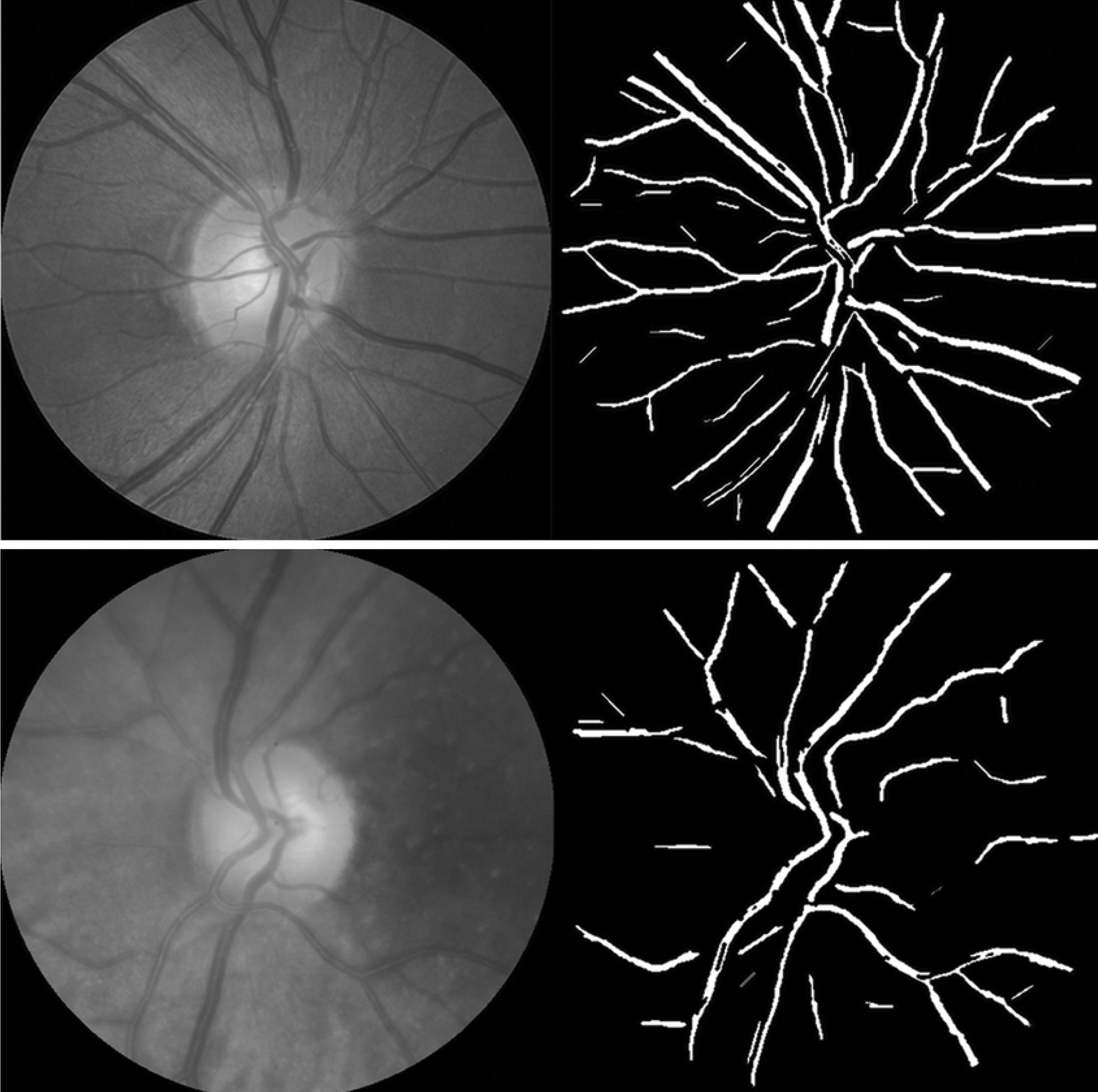 |
| A metric called retinal fractal dimension, relating to the complexity of the retinal vasculature, may have a future role in screenings for systemic diseases. These photos show patients with high (top image) and low (bottom image) fractal dimension. Photo: Chelvin CA, et al. Nephrology Dialysis Transplantation. 2010; 25(7):2252–2258. Click image to enlarge. |
Retinal imaging can help detect numerous types of systemic disease even before a patient’s physical symptoms develop, leading to sooner treatment. One retinal trait recently identified as a biomarker of systemic health is retinal fractal dimension (FD). The metric is essentially a measure of the complexity and branching pattern of the retinal vasculature; it quantifies the degree of self-similarity or irregularity in the branching patterns of blood vessels in the retina. A higher FD value indicates a more complex and intricate vasculature, while a lower FD value suggests a less complex and simpler pattern. Today, artificial intelligence and deep learning technologies make it possible to accurately calculate retinal fractal dimension from retinal images, hence its emerging value in systemic disease risk assessment and monitoring.
To further study the association between FD and systemic health, researchers examined color fundus images from 96 individuals (183 eyes; ages 18 to 81 years) at a university-based optometry clinic in Scotland. Retinal fractal dimension was measured using an AI algorithm called “Deep Approximation of Retinal Traits (DART),” designed to more accurately read images of poor quality. The researchers pointed out in their paper on the study that, “Despite DART being designed to be more robust, a significant association between image quality and FD remained.”
Age was also associated with lower retinal FD, consistent with previous literature. “However,” the study authors reported, “FD variance was higher in older patients, and some patients over 60 had FD comparable to those of patients in their 20s.”
The third factor associated with FD was systemic conditions, the prevalence of which was significantly associated with lower FD even after adjusting for image quality and age.
Altogether, these findings suggest that as a biomarker of systemic health, FD could be used to identify individuals at risk for various diseases, such as myocardial infarction, and enable phenome- and genome-wide analyses of the microvasculature. However, further investigation is needed to fully understand the relationship between FD and age, as well as between FD and image quality, the study authors emphasized in their conclusions. They offered several suggestions for future studies on these associations.
“Future work ideally should use fully automated methods that avoid introducing subjectivity and allow better comparison of quality annotations across different works,” the authors wrote. “Second, although DART is more robust to image quality than traditional approaches, some images might still be too poor in quality. Third, despite the promising results in the present work and literature at large, future work should also more closely investigate what specific vascular changes are captured by FD,” they concluded.
Engelmann J, Kearney S, McTrusty A, McKinlay G, Bernabeu MO, Strang N. Retinal fractal dimension is a potential biomarker for systemic health-evidence from a mixed-age, primary-care population. Transl Vis Sci Technol. 2024;13(4):19, |


